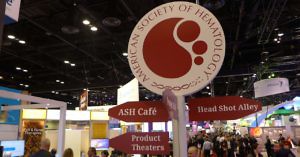Potential of Immunometabolism to Enhance CAR T cell therapy
One only has to look at the number of clinical trials to recognize that cell therapies are one of fastest growing areas in terms of cancer new product development.
Over the past several years we’ve seen many changes and improvements in continuous innovation regarding the development of CAR T cells.

What metabolic “treats” do T cells like?
There has been no shortage of novel ways to enhance their targeting, durability, efficacy, or ease of administration. Most of the early strategies have yet to translate into commercial products, but it remains an area an attractive area to investors hoping to repeat the returns seen with Juno and Kite as more competitors enter the field.
In the fifth post in our mini-series on novel approaches in the emerging immunometabolism niche, we’re looking at ways to metabolically reprogram CAR T cells, as well as what the future may hold for the next generation of CAR T cells in this context.
Like a postcard from one’s summer holiday, it’s an opportunity to offer a snapshot at a moment in time from our journey.
We were fortunate to have the opportunity to talk with a researcher who is actively at the forefront of this area. Dr Roddy O’Connor is working with Carl June along with various colleagues at the University of Pennsylvania, and he kindly spoke to BSB about his work.
To learn more about the emerging area of immunometabolism and its potential to enhance CAR T cell therapy, subscribers can log-in or you can click to gain access to BSB Premium Content.
This content is restricted to subscribers
 Earlier this month, Incyte announced the phase 3 trial miss for their JAK1 inhibitor in acute graft versus host disease (GVHD), perhaps coming as a surprise to a few observers familiar with the positive ruxolitinib result, but not so much to clinicians.
Earlier this month, Incyte announced the phase 3 trial miss for their JAK1 inhibitor in acute graft versus host disease (GVHD), perhaps coming as a surprise to a few observers familiar with the positive ruxolitinib result, but not so much to clinicians.

 Yes, it’s time for another Bushidō –
Yes, it’s time for another Bushidō –  In a remarkable tale of two cities in real life, two companies we discussed in those posts – Constellation Pharma and Tensha Therapeutics – have had markedly different fortunes since then. Roche decided to end their collaboration with the former and went on to acquire the latter instead.
In a remarkable tale of two cities in real life, two companies we discussed in those posts – Constellation Pharma and Tensha Therapeutics – have had markedly different fortunes since then. Roche decided to end their collaboration with the former and went on to acquire the latter instead. It’s Day 6 of our Countdown to the AACR 2016 annual meeting in New Orleans. We’re at the halfway, 6 posts written and 6 more to go! Then it will be daily Live blogs from the meeting.
It’s Day 6 of our Countdown to the AACR 2016 annual meeting in New Orleans. We’re at the halfway, 6 posts written and 6 more to go! Then it will be daily Live blogs from the meeting. We’re all familiar by now with the idea of checkpoints that can be inhibitory (release the brake) or stimulatory (put the foot on the gas) on the immune system.
We’re all familiar by now with the idea of checkpoints that can be inhibitory (release the brake) or stimulatory (put the foot on the gas) on the immune system.